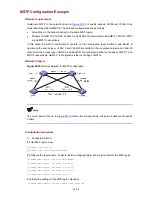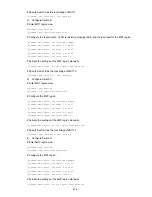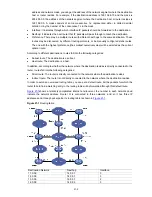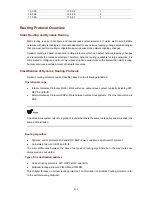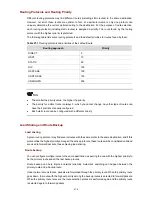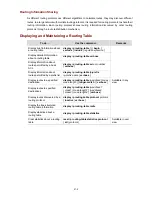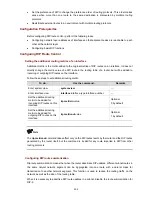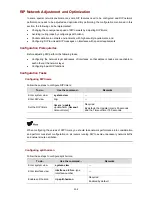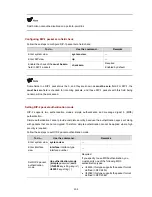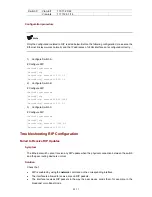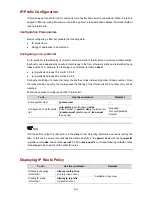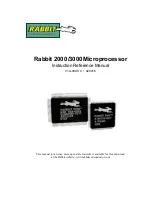
23-1
23
RIP Configuration
Wh n configuring RIP, go to these
e
sections for information you are interested in:
z
RIP Overview
z
RIP Configuration Task List
z
RIP Configuration Example
shooting RIP Configuration
z
Trouble
The term
router
in this chapter refers to a router in a generic sense or an Ethernet switch running a
uting protocol.
ro
RIP
Routing information protocol (RIP) is a simple interior gateway protocol (IGP) suitable for small-sized
mmended in complicated large networks.
Basic Concepts
RIP
teger ranging from 0 and 15. The hop count equal to or exceeding 16 is defined as infinite;
e and avoid routing loop, RIP supports split horizon. Besides, RIP can import
her routing protocols.
RIP routing
ies of all reachable destinations, and each
z
address of a host or network.
Overview
networks. RIP is not reco
RIP is a distance-vector (D-V) algorithm–based protocol. It uses port 520 to exchange routing
information through UDP packets.
RIP uses hop count (also called routing cost) to measure the distance to a destination address. In RIP,
the hop count from a router to its directly connected network is 0, and that to a network which can be
reached through another router is 1, and so on. To restrict the time to converge, RIP prescribes that the
cost is an in
that is, the destination network or host is unreachable. This limitation makes RIP not suitable for large
networks.
To improve performanc
routes discovered by ot
database
Each RIP router has a routing table containing routing entr
routing entry contains:
Destination address: IP
z
Next hop: IP address of an interface on the adjacent router that IP packets should pass through to
reach the destination.


